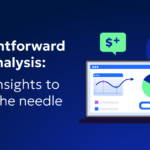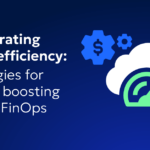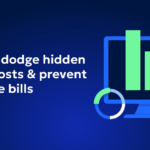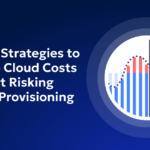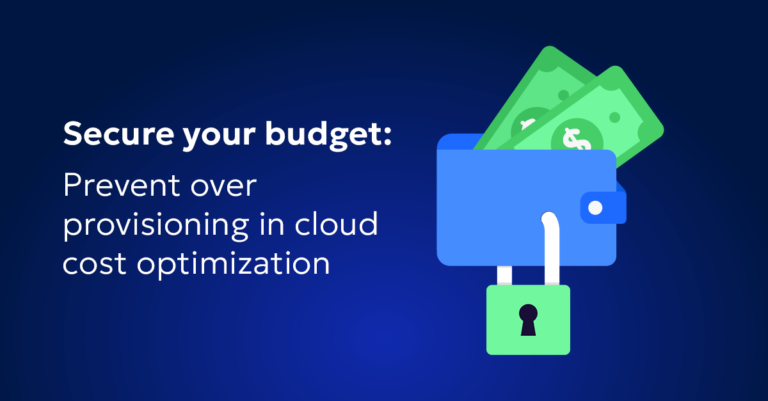
Secure your cloud budget: expert strategies to prevent over-provisioning
Accurately forecasting cloud spend is crucial for maintaining financial stability and optimizing your cloud environment. Over-provisioning, where you allocate more resources than necessary, leads to unnecessary costs and wasted resources. Therefore, it’s essential to adopt methods that help you prevent over-provisioning in cloud cost optimization.
Based on empirical data gathered from working with over 1,000 clients, we have identified six common causes of over-provisioning. This article outlines these causes and provides strategies to overcome them, ensuring your cloud resources are used efficiently and cost-effectively:
1. Overestimate resource needs
Issue: You might overestimate the resource requirements for your workloads, leading to allocating more resources than necessary. This often happens due to a lack of historical data, over-cautious planning, or uncertainty about future usage patterns.
Solution:
- Conduct accurate workload assessments: Gather detailed historical data and analyze usage patterns to understand your resource needs precisely. Use cloud monitoring tools to gain insights into actual usage.
- Right-size regularly: Regularly evaluate and adjust your instances to ensure they match your workload requirements. Start using AWS right-sizing tools or if you are an Azure user, read how you can get started with right-sizing at Azure in this guide.
- Establish a feedback loop: Continuously gather input from stakeholders and adjust resource allocation based on actual needs. This ensures that resources align with current demand.
2. Excessive use of Reserved Instances
Issue: You might purchase too many reserved instances without accurately predicting long-term usage, leading to unused capacity. This often occurs due to attractive upfront discounts, pressure to commit to long-term savings, or misjudging future growth.
Solution:
- Monitor Utilization Closely: Track the usage of your reserved instances regularly using AWS reserved instances reporting and monitoring or Azure’s reservation utilization alert. These tools help you monitor consumption patterns and identify underutilized instances.
- Adjust Reservations Based on Workloads: Modify your reservations as workloads change to ensure optimal use. This might involve adjusting the terms or quantities of your reserved instances.
- Sell Unused RIs: Use secondary markets like the AWS Reserved Instance Marketplace to sell any unused reserved instances and recover some of your costs.
3. Set aggressive scaling policies
Issue: Setting auto-scaling policies too aggressively can result in over-provisioning resources during peak times.
Solution:
- Establish appropriate limits: Set realistic scaling limits to prevent over-provisioning and ensure resources scale in proportion to actual demand.
- Monitor scaling activities: Regularly review scaling activities and make necessary adjustments based on performance data and real-time monitoring.
- Test under different scenarios: Conduct tests under various scenarios to ensure your scaling policies are balanced and optimized for different load conditions.
4. Neglect continuous monitoring
Issue: If you neglect continuous monitoring and adjustment of resource allocation, you might maintain more resources than necessary.
Solution:
- Use Real-Time Monitoring Tools: Implement real-time monitoring tools to keep track of resource utilization and application performance continuously.
- Set Custom Alerts: Create custom alerts that notify you when resource utilization exceeds necessary thresholds, enabling timely adjustments.
- Conduct Frequent Reviews: Regularly review your resource allocation to ensure it aligns with current needs and adjust as necessary to avoid excess.
5. Skip regular resource audits
Issue: Skipping regular audits can result in overlooked over-provisioned resources, leading to unnecessary costs.
Solution:
- Schedule regular audits: Plan and conduct resource audits monthly or quarterly to review resource usage and identify over-provisioned resources.
- Identify and adjust over-provisioned resources: During audits, pinpoint resources that are underutilized and adjust or eliminate them to optimize costs.
- Optimize Resource Utilization: Redistribute resources as needed based on audit findings to ensure they are used efficiently and cost-effectively.
6. Use inconsistent tagging
Issue: Inconsistent management and tagging of resources can make it difficult to track and optimize cloud usage.
Solution:
- Implement a tagging strategy: Develop a consistent tagging strategy for all resources to categorize and manage them effectively. Ensure tags are descriptive and standardized across the organization.
- Leverage tag-based reporting: Use tag-based reporting to gain insights into resource usage and costs, helping to identify trends and make informed decisions.
- Enforce tagging policies: Ensure all resources are tagged correctly and enforce tagging policies to maintain consistency and facilitate efficient resource management.
Achieve accurate cloud spend forecasts
Avoiding over-provisioning requires a meticulous and data-driven approach. Conduct accurate workload assessments, leverage right-sizing tools, set appropriate scaling policies, and regularly monitor resource usage to prevent unnecessary costs and ensure efficient cloud resource utilization. Implement detailed audits and a consistent tagging strategy to further enhance your ability to maintain an optimized cloud environment. With these strategies, you can achieve precise cloud spend forecasts, ensuring financial stability and operational efficiency.
FAQ
1. How can I ensure my auto-scaling policies aren’t too aggressive?
To avoid aggressive auto-scaling, set clear and appropriate scaling limits. Regularly monitor scaling activities and adjust configurations based on real-time performance data. Testing under different scenarios also helps optimize your policies.
2. What tools can help me monitor my cloud resource utilization in real-time?
Tools like AWS CloudWatch and Azure Monitor provide real-time monitoring of your cloud resources. These tools can help you track resource utilization, set custom alerts, and gain insights into performance metrics.
3. How often should I conduct resource audits?
Conduct resource audits at least monthly or quarterly. Regular audits help identify over-provisioned resources and ensure all resources are used effectively. Adjust and optimize resource allocation based on audit findings.
4. What are some best practices for tagging cloud resources?
Develop a consistent tagging strategy across all resources. Use tags to categorize and manage resources effectively. Ensure all resources are tagged correctly and enforce tagging policies to maintain consistency. Tag-based reporting helps gain insights into resource usage and costs.
5. How can I optimize the use of reserved instances?
Monitor the utilization of your reserved instances closely. Adjust your reservations based on changing workloads to ensure optimal use. Consider selling unused reserved instances on secondary markets like the AWS Reserved Instance Marketplace.

